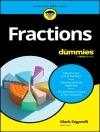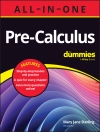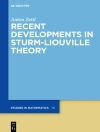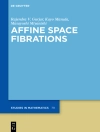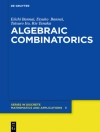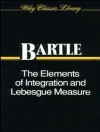Unmanned Aircraft Systems (UAS) have seen unprecedented levels of growth during the last decade in both military and civilian domains. It is anticipated that civilian applications will be dominant in the future, although there are still barriers to be overcome and technical challenges to be met. Integrating UAS into, for example, civilian space, navigation, autonomy, see-detect-and-avoid systems, smart designs, system integration, vision-based navigation and training, to name but a few areas, will be of prime importance in the near future.
This special volume is the outcome of research presented at the International Symposium on Unmanned Aerial Vehicles, held in Orlando, Florida, USA, from June 23-25, 2008, and presents state-of-the-art findings on topics such as: UAS operations and integration into the national airspace system; UAS navigation and control; micro-, mini-, small UAVs; UAS simulation testbeds and frameworks; UAS research platforms and applications; UAS applications.
This book aims at serving as a guide tool on UAS for engineers and practitioners, academics, government agencies and industry.
Previously published in the Journal of Intelligent and Robotic Systems, 54 (1-3, 2009).
Inhaltsverzeichnis
Guest Editorial for the Special Volume On Unmanned Aircraft Systems (UAS).- Development of an Unmanned Aerial Vehicle Piloting System with Integrated Motion Cueing for Training and Pilot Evaluation.- Networking Issues for Small Unmanned Aircraft Systems.- UAVs Integration in the SWIM Based Architecture for ATM.- A Survey of UAS Technologies for Command, Control, and Communication (C3).- Unmanned Aircraft Flights and Research at the United States Air Force Academy.- Real-Time Participant Feedback from the Symposium for Civilian Applications of Unmanned Aircraft Systems.- Computer Vision Onboard UAVs for Civilian Tasks.- Vision-Based Odometry and SLAM for Medium and High Altitude Flying UAVs.- Real-time Implementation and Validation of a New Hierarchical Path Planning Scheme of UAVs via Hardware-in-the-Loop Simulation.- Comparison of RBF and SHL Neural Network Based Adaptive Control.- Small Helicopter Control Design Based on Model Reduction and Decoupling.- Fuzzy Logic Based Approach to Design of Flight Control and Navigation Tasks for Autonomous Unmanned Aerial Vehicles.- From the Test Benches to the First Prototype of the mu Fly Micro Helicopter.- Modeling and Global Control of the Longitudinal Dynamics of a Coaxial Convertible Mini-UAV in Hover Mode.- Subsonic Tests of a Flush Air Data Sensing System Applied to a Fixed-Wing Micro Air Vehicle.- Testing Unmanned Aerial Vehicle Missions in a Scaled Environment.- A Framework for Simulation and Testing of UAVs in Cooperative Scenarios.- Distributed Simulation and Middleware for Networked UAS.- Design and Hardware-in-the-Loop Integration of a UAV Microavionics System in a Manned–Unmanned Joint Airspace Flight Network Simulator.- A Hardware Platform for Research in Helicopter UAV Control.- A Development of Unmanned Helicopters for Industrial Applications.- The Implementation of an Autonomous Helicopter Testbed.- Modeling and Real-Time Stabilization of an Aircraft Having Eight Rotors.- An Overview of the “Volcan Project”: An UAS for Exploration of Volcanic Environments.- FPGA Implementation of Genetic Algorithm for UAV Real-Time Path Planning.- Concepts and Validation of a Small-Scale Rotorcraft Proportional Integral Derivative (PID) Controller in a Unique Simulation Environment.


